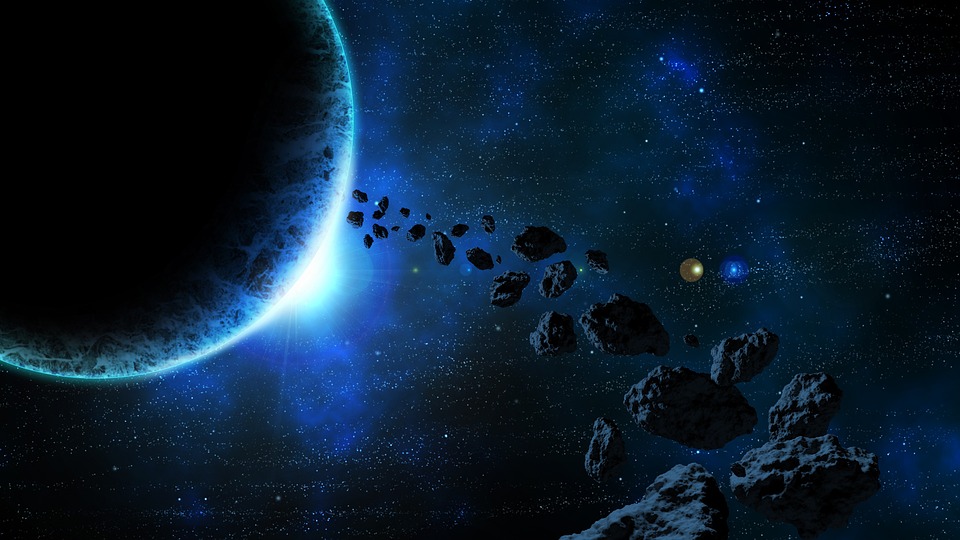Asteroids and comets are usually seen by themselves whenever they hurtle through space and within the Solar System. However, a group of astronomers noticed something unusual about the latest space rock to pass by the planet.
Asteroid 2020 BX12 was spotted by space agencies in the world Tuesday flying towards Earth and passing by the planet instead. The rock missed Earth by a distance of 4.3 million kilometers, this asteroid also measured between 656 feet to 1,476 feet in diameter, making it slightly larger than some of the previous rocks that passed by the planet over the past few days. As it flew by Earth, astronomers at the Arecibo Observatory Planetary Radar Science Group in Puerto Rico noticed something unusual about BX12 when it passed by. They noticed that the asteroid had a little moon with it.
The moon that accompanied the asteroid measured only 70 meters in diameter. The organization announced more details regarding BX12. “Preliminary analysis suggests that the primary asteroid is a round object at least 165 meters diameter rotating approximately once every 2.8 hours or less. The satellite has a diameter of approximately 70 meters and rotates once every 49 hours or less. The distance between the two bodies is 360 meters.”
Seeing an asteroid with its own moon or satellite is not a new thing, however, as there are rocks in the main asteroid belt that are known to have moons that orbit them. Of the 16,400 Near-Earth asteroids, around 60 rocks roughly have at least one moon.
Meanwhile, a study regarding one of the much larger asteroids in space, Pallas, found that the space rock has a lot of craters. The researchers took a closer look at the asteroid, which was first discovered in 1802 and is an asteroid that has yet to be visited by a spacecraft. They found that this particular rock is sprinkled with craters that range from 30 to 120 kilometers in width.
According to the simulations done by the researchers, Pallas would have twice as many craters as the largest known asteroid Ceres, and three times as many as the asteroid known as Vesta, which is the second-largest and brightest space rock.



 One of the largest searches for alien life started 30 years ago. Its legacy lives on today
One of the largest searches for alien life started 30 years ago. Its legacy lives on today  A new study reveals the structure of violent winds 1,300 light years away
A new study reveals the structure of violent winds 1,300 light years away  What was the first thing scientists discovered? A historian makes the case for Babylonian astronomy
What was the first thing scientists discovered? A historian makes the case for Babylonian astronomy  FDA Vaccine Chief Peter Marks Resigns Amid Controversy Over Transparency
FDA Vaccine Chief Peter Marks Resigns Amid Controversy Over Transparency  AstraZeneca’s Imfinzi Gets US Approval for Bladder Cancer Treatment
AstraZeneca’s Imfinzi Gets US Approval for Bladder Cancer Treatment  From dead galaxies to mysterious red dots, here’s what the James Webb telescope has found in just 3 years
From dead galaxies to mysterious red dots, here’s what the James Webb telescope has found in just 3 years  Asteroid has a very small chance of hitting Earth in 2032, but a collision could devastate a city
Asteroid has a very small chance of hitting Earth in 2032, but a collision could devastate a city  What’s the shape of the universe? Mathematicians use topology to study the shape of the world and everything in it
What’s the shape of the universe? Mathematicians use topology to study the shape of the world and everything in it  Double Moonshot: Japan’s ispace and Firefly Launch Lunar Missions
Double Moonshot: Japan’s ispace and Firefly Launch Lunar Missions  Explosive CIA Whistleblower Claims Havana Syndrome Victims Face Cancer, Dementia, and Government Betrayal
Explosive CIA Whistleblower Claims Havana Syndrome Victims Face Cancer, Dementia, and Government Betrayal  What are the chances an asteroid will impact Earth in 2032?
What are the chances an asteroid will impact Earth in 2032?  Quantum technologies are changing our world – what does NZ need to be part of the next revolution?
Quantum technologies are changing our world – what does NZ need to be part of the next revolution?  Why we are so scared of space – and how this fear can drive conspiracy theories
Why we are so scared of space – and how this fear can drive conspiracy theories 































